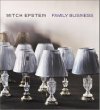by Laurel | May 2nd, 2012
19 March 1933
Mrs. Walence Guilty of Manslaughter in Slaying of Husband
Holyoke Woman Unmoved as Jury Returns Verdict
Jurors, Out Nearly Five Hours, Recommend Mercy But Plea Officially Ignored
Mary Kostek’s Death Kept From the Jury
Officials Suppress News of “Other Woman,” Avoiding Mistrial
Tension Grows as Verdict Awaited
“Guilty of Manslaughter.” These three works from Patrick F. Quinlivan, foreman of the Hampden county jury which heard the case of Mary S. Walence, 43, charged with shooting her husband, Paul, while he slept in their bedroom at their Holyoke home. July 11, closed with dramatic suddenness the trial which opened Monday, st 4:10 yesterday afternoon. The sentence will be imposed Monday morning by Judge Daniel T. O’Connell.
Hears Verdict Unemotionally
Dry-eyed, the frail mother of five children heard the words without changing expression. She watched the judge unemotionally while he explained to Quinlivan that the latter’s verdict, “Guilty of manslaughter with a recommendation for mercy” had no legal bearing since the judge alone could decide on the punishment, and then heard Quinlivan repeat only the first three words of the verdict.
To this murder trial and the verdict of guilty, always a dramatic and moving spectacle, was added the sensational fact that one of the principal witnesses, Miss Mary Kostek, accused of being one of the women to whom Paul Walence paid his attentions, was found dead in bed yesterday morning. Unknown to the jury and to the principals in the tragedy, death, which had come not only to the husband, a grocery store and speakeasy proprietor, but to one of the women who had destroyed the happiness of the Walence home, weaving one more strand in the chain which ended in the courtroom yesterday, when the jury announced its decision on the case of Mrs. Walence.
Jury Out Nearly Five Hours
And in the courtroom a murmur swept through the rows of spectators as the decision was announced. During the four hours and 45 minutes the jury had been deliberating, tension had grown among the spectators, the attorneys and the relatives of the accused woman — a tension that tightened when the jurymen filed back to report to the court.
As Judge O’Connell heard the decision and started to thank the jury for the manner in which the members had served the commonwealth, the county, and justice itself, the only sound other than his voice was the sobbing of Mrs. Walence’s children, their grief overcoming them as they sat on the benches behind the cage from which that had vainly hoped for five days the jury’s verdict would permit their mother to go free.
Defendant Goes Out Dry-Eyed
Mrs. Walence did not cry. Not then, as the jury was thanked, nor later as the courtroom was cleared and preparations made to taker her back to the county jail to await her sentence. She was given an opportunity to comfort four of her daughters — the youngest was home ill — and she talked quietly to them. They left her, still sobbing bitterly, to be driven to their home while she walked with a deputy sheriff and a matron down the stairs to a waiting car.There was no crowd around. Her head up, her eyes dulled and her face a mask, she climbed into the machine. Under the general laws of the commonwealth, manslaughter is punishable by not more than 20 years in jail or a fine of $1000 and not less than 2 1/2 years in jail. Atty. Thomas C. Maher, who defended the woman said after the verdict was announced, that an appeal would probably be taken.
Kostek Death Kept From Jury
The death of Mary Kostek brought to court officials yesterday morning the immediate problem of suppression of the news, since with the jury charged and ready to consider the case, this development might bring a mistrial.
Court official hurriedly took action to prevent the cried of newsboys shouting this story, from reaching the ears of the jury. Persons entering the courthouse were asked to give up their newspapers, by George O’Donnell of Holyoke, member of Superintendent of Buildings John J. Conway’s staff, so that the news would not be seen by those involved in the case. When the jury was taken to the Nayasset Club for lunch police officers were posted to keep newsboys away and the officers remained on duty until the verdict was reached.
Judge Thanks the Jury
Judge O’Connell said to the jury after the verdict was announced: “On behalf of the commonwealth as well as the county and justice itself, I thank you for the performance of your duty. The call has been made for you to serve the state and county and next to the call of serving the colors of the nation in war, there is no duty as great. Serving the cause of justice adds strength to the foundation of the country.” He then excused the jury from further service.
Dist. Atty. Thomas Moriarty and Ass. Dist. Atty. John . Granfield conducted the case for the commonwealth.
Give the Jury Alternatives
Judge O’Connell began his charge at 9 and ended at 10:12 and said that one of four verdicts could be returned, not guilty, guilty of manslaughter, guilty of murder in the second degree, or guilty of murder in the first degree. He said that the commonwealth alleges that the killing was done with deliberate, premeditated malice and forethought, which would comprise murder in the first degree, but under the indictment a verdict of second degree or manslaughter could also be returned in case the defendant was found guilty of the killing.
He aid that the evidence disclosed that Walence came to his death at 2:30 the morning of July 11 by one of four bullets which entered his body, a fifth grazing his arm. Walence was in his own home and bedroom occupied by himself and his wife when it happened.
An investigation by the police in the course of their duty followed the killing and every effort was made to discover and place on trial the person who committed the crime As the result of the investigation his wife, Mary Walence is now before the jury on that charge and the jury has the duty of determining whether or not the accusation has been made out.
It is a duty of the highest importance not only to the prisoner, but to the whole commonwealth, he said. A false verdict of guilty would do great injury to the prisoner, on the other hand a false vote of acquittal would be unjust to the commonwealth and of no real benefit to the woman herself. Only by rendering a true verdict will the jury render a duty to the commonwealth that few of their fellow citizens will ever have the opportunity to perform.
Not To Be Convicted on Suspicion
It is necessary to prove the defendant guilty. She is not required to prover her innocence. the fact that she is in the dock is not to be taken against her, neither is the fact that an indictment has been returned against her. She is not to be convicted on suspicion or probability. If the fact can be reconciled with any reasonable theory of her innocence, she must be discharged.
The case must be proved against her beyond a reasonable doubt, not all possible or imaginary doubts, but proof such as satisfies the consciences of the jury and so satisfies them as to exude any other reasonable conclusion.
Judge O’Connell paid particular attention to that vital part of the testimony in which it was alleged that she said to Capt. Peter F. Cullen of the Holyoke police, “I didn’t mean to kill him, I didn’t mean to kill him” Capt. Cullen testified to that.
Judge O’Connell said the defendant claims that Capt. Cullen used the words first, saying, “Perhaps you didn’t mean to kill him,” and that the defendant says she merely repeated his words and immediately added, “I didn’t do it.” This matter, he told the jury depends on whose version of the conversation the jury adopts. Judge O’Connell added that immediately before and after the words “I didn’t mean to kill him,” were used the defendant had denied the shooting.
Adapted from The Springfield Republican.
Previously published articles about this case:








